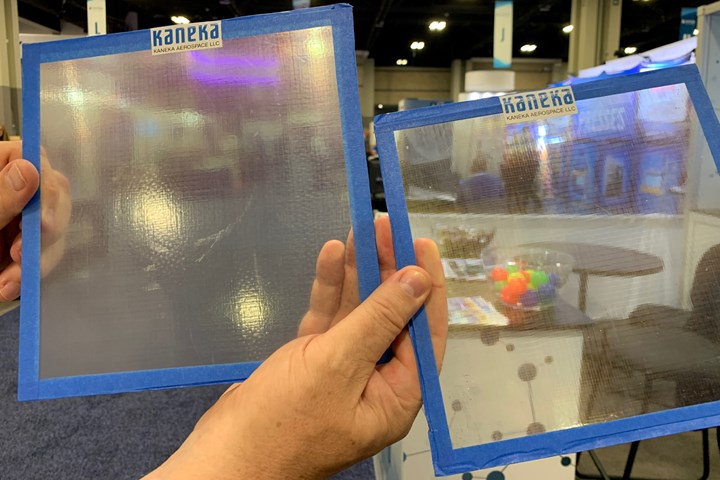CAMX 2022 exhibit preview: AGY
An S-2 Glass fiber/epoxy material produced collaboratively between AGY and Kaneka Aerospace offers tunable transparency, low haze, good impact and mechanical properties.
Glass fiber specialist AGY (Aiken, S.C., U.S.) and resins and chemicals specialist Kaneka Aerospace LLC (Benicia, Calif., U.S.) have announced the development of a transparent composite material that combines an epoxy-based resin system reinforced with an AGY continuous S-2 Glass fiber fabric.
Versions of the material developed so far are comprised of multiple plies of woven S-2 Glass yarns or rovings and feature high transparency, low haze and a high level of impact performance. Kaneka says the epoxy is a formulated resin that can be chemically tuned to change the refractive index of the resin to match that of the S-2 Glass fibers, which maximizes the transparency without significant reduction in mechanical properties.
The material is currently available for infusion only, but the companies report that a prepreg version is undergoing development and testing. Potential applications of the material include ballistic shields, machine guards or any part that requires a high level of transparency along with excellent impact performance.
For more information, contact Dr. Ekaterina Ryjkina, general manager of Kaneka Aerospace, or Iain Montgomery, global director of new business development at AGY.
Related Content
-
TU Munich develops cuboidal conformable tanks using carbon fiber composites for increased hydrogen storage
Flat tank enabling standard platform for BEV and FCEV uses thermoplastic and thermoset composites, overwrapped skeleton design in pursuit of 25% more H2 storage.
-
Cryo-compressed hydrogen, the best solution for storage and refueling stations?
Cryomotive’s CRYOGAS solution claims the highest storage density, lowest refueling cost and widest operating range without H2 losses while using one-fifth the carbon fiber required in compressed gas tanks.
-
Recycling end-of-life composite parts: New methods, markets
From infrastructure solutions to consumer products, Polish recycler Anmet and Netherlands-based researchers are developing new methods for repurposing wind turbine blades and other composite parts.














